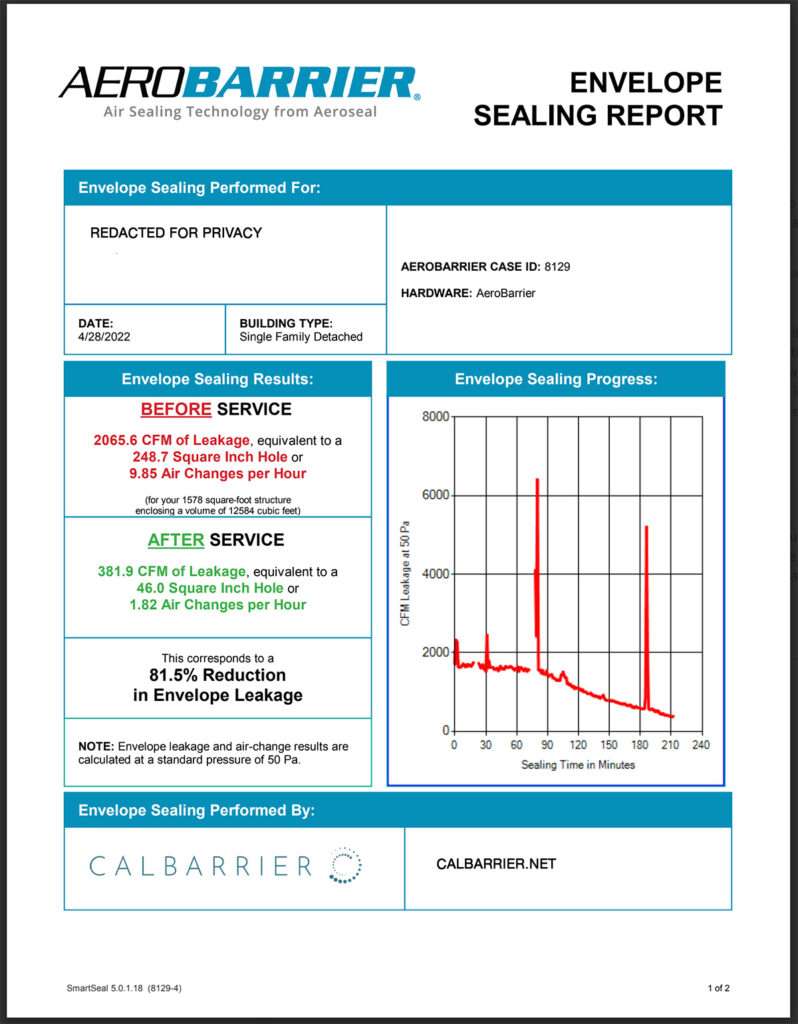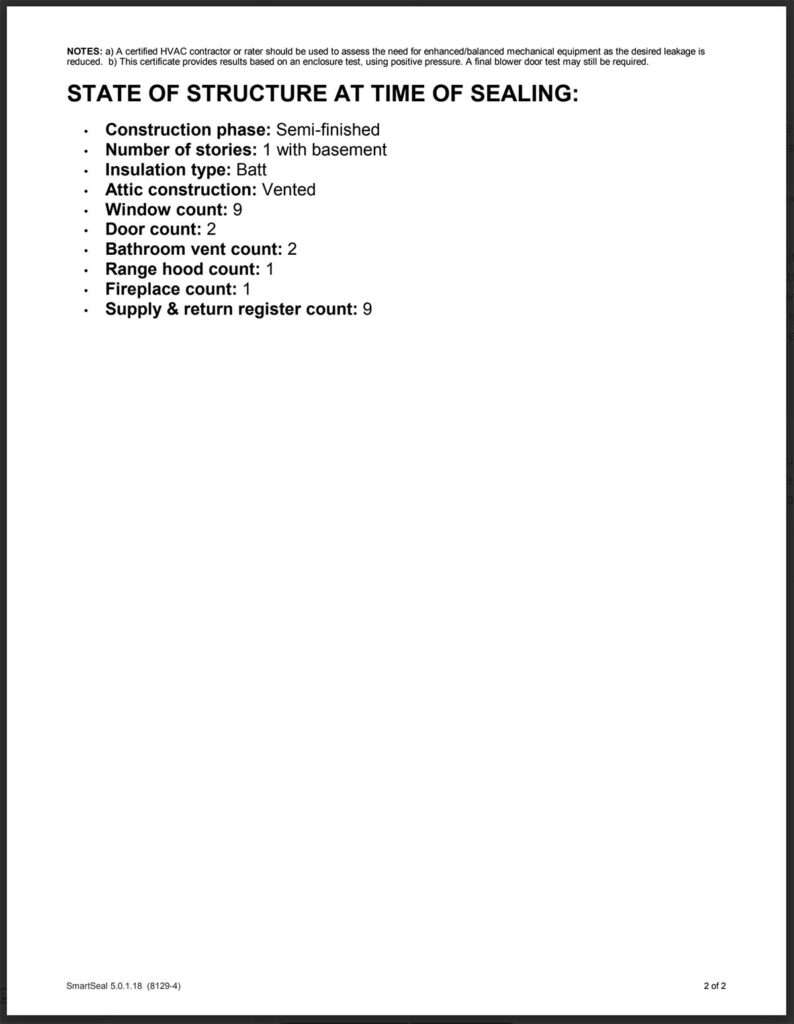Case Study:Aeroseal Envelope Installation for Home Energy Efficiency
Client Profile:
The client, a homeowner in a suburban neighborhood, was concerned about high energy bills and discomfort within their home. Their property, built several years ago, exhibited significant air leakage issues, as indicated by an initial blower door test result of 9.85 ACH50 (Air Changes per Hour at 50 Pascals).
Challenge:
The high air leakage rate indicated substantial energy losses and discomfort. The client sought a solution to improve energy efficiency and indoor comfort without resorting to extensive renovations.
Solution:
After consultation, the client opted for an Aeroseal Envelope installation—a revolutionary approach to sealing air leaks in residential properties. Aeroseal Envelope employs an advanced aerosolized sealant technology to effectively seal leaks in the building envelope.
Implementation:
- Preparation: Before Aeroseal Envelope application, a thorough assessment identified air leakage points through a blower door test.
- Aeroseal Envelope Application: Trained technicians pressurized the home and dispersed the sealant particles into the air. As the particles were drawn to leaks by escaping air, they sealed the gaps.
- Real-time Monitoring: Monitoring equipment tracked progress during the application to ensure comprehensive coverage and effective sealing.
- Post-Application Testing: After Aeroseal Envelope application, another blower door test quantified the reduction in air leakage.
Results:
Following Aeroseal Envelope installation, the home’s air leakage rate decreased significantly from 9.85 ACH50 to 1.82 ACH50—a remarkable improvement of over 80%. This reduction in air infiltration led to immediate and long-term benefits:
- Energy Savings: Reduced air leakage enhanced the efficiency of heating and cooling systems, resulting in lower energy consumption and reduced utility bills.
- Enhanced Comfort: With minimized air leakage, the home maintained consistent indoor temperatures, eliminating drafts and cold spots, thereby enhancing overall comfort for occupants.
- Improved Indoor Air Quality: Fewer external pollutants infiltrated the home, leading to improved indoor air quality and a healthier living environment.
- Environmental Impact: Decreased energy usage not only reduced the homeowner’s expenses but also contributed to environmental sustainability efforts by lowering the home’s carbon footprint.
Explanation of ACH50:
Air Changes per Hour at 50 Pascals (ACH50) measures the air leakage rate of a building under controlled conditions. It represents the number of times per hour that the entire volume of air within a building is replaced when subjected to a pressure difference of 50 Pascals (Pa) between the interior and exterior. A lower ACH50 indicates tighter building construction and reduced air leakage, leading to improved energy efficiency and indoor comfort.
Conclusion:
The Aeroseal Envelope installation successfully addressed the client’s objectives by significantly reducing air leakage and improving energy efficiency, comfort, and indoor air quality within the home. With its seamless application process and substantial performance improvements, Aeroseal Envelope emerged as an ideal solution for enhancing the performance of existing residential structures without the need for extensive renovation.


